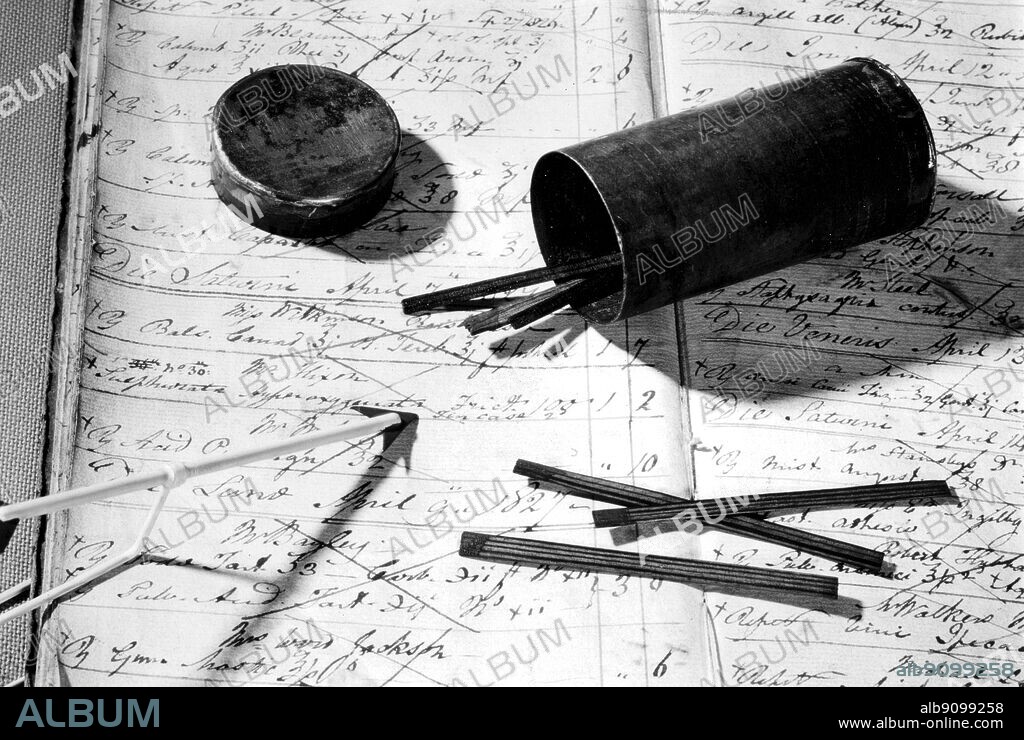alb9099258
Walker's Friction Match. John Walker, a chemist from Stockton-on-Tees, invented his "Friction Lights" in 1826, but although his friends urged him to do so, he refused to patent them on grounds that the idea was not sufficiently important. They were sold in round tin containers for 1/2d. per hundred. The earliest lights had cardboard stems, but he quickly improved them by using slivers instead. They were ignited by placing the head of the light between a folded piece of sandpaper, then sharply withdrawing it. As Walker had not patented his friction lights it meant that anyone could make them, and that is what soon happened..

|
Añadir a otro lightbox |
|
Añadir a otro lightbox |



¿Ya tienes cuenta? Iniciar sesión
¿No tienes cuenta? Regístrate
Compra esta imagen

Descripción:
Ver traducción automática
Walker's Friction Match. John Walker, a chemist from Stockton-on-Tees, invented his "Friction Lights" in 1826, but although his friends urged him to do so, he refused to patent them on grounds that the idea was not sufficiently important. They were sold in round tin containers for 1/2d. per hundred. The earliest lights had cardboard stems, but he quickly improved them by using slivers instead. They were ignited by placing the head of the light between a folded piece of sandpaper, then sharply withdrawing it. As Walker had not patented his friction lights it meant that anyone could make them, and that is what soon happened..
Crédito:
Album / TopFoto
Autorizaciones:
Modelo: No - Propiedad: No
¿Preguntas relacionadas con los derechos?
¿Preguntas relacionadas con los derechos?
Tamaño imagen:
5704 x 3829 px | 62.5 MB
Tamaño impresión:
48.3 x 32.4 cm | 19.0 x 12.8 in (300 dpi)
Palabras clave:
 Pinterest
Pinterest Twitter
Twitter Facebook
Facebook Copiar enlace
Copiar enlace Email
Email
